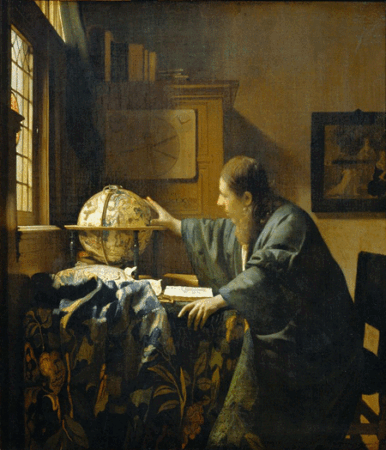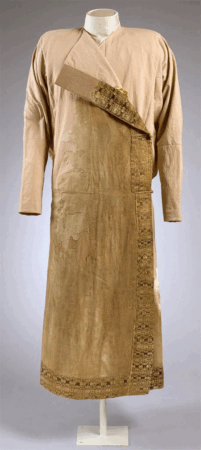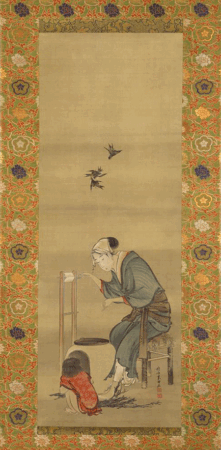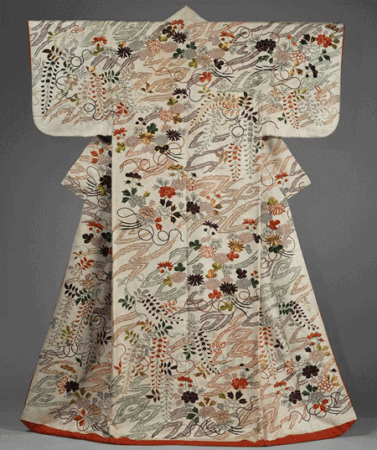Vermeer’s Robe: The Dutch and Japan, 1600-1800
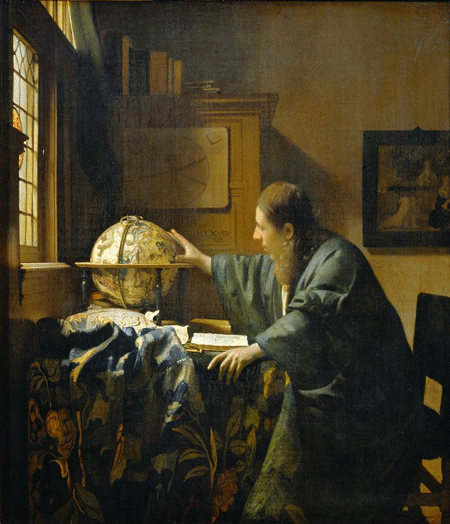
Jan Vermeer | The Astronomer, 1668 | The Astronomer | Image and original data provided by Erich Lessing Culture and Fine Arts Archives/ART RESOURCE, N.Y | artres.com artres.com
Dr. Martha Hollander
Professor
Hofstra University
My research and teaching in art history has always focused on the ways in which a single work of art can open up an entire world of knowledge, making vivid and real the otherwise rather bland term “historical context.” For the past few years I have been working on a study of men’s fashions in the seventeenth century and their representations in Dutch art. This has involved making a number of image groups in Artstor where I connect visual art, textiles, and clothing accessories.
One project that has proved particularly rich culminated in a recently published article called “Vermeer’s Robe: Costume, Commerce and Fantasy in the Early Modern Netherlands.” It concerns the japonsche rok, the Japanese silk robe portrayed most famously in Vermeer’s The Astronomer and The Geographer.
These rare spoils of Asian trade were first presented annually by Japanese shoguns to officials of the Dutch east India Company (VOC) and thereafter were made available as Western copies. By the end of the seventeenth century, similar robes made of chintz or batik, also known as banyans, were imported from India and went through the same transformation to domestic product. All of these long, loose garments possessed a novelty and cachet unmatched by more abundant imports such as spices, lacquer, porcelain, and precious metals. They appear in portraits of eminent and wealthy men, as well as in fictionalized genre images of scholars and scientists. Collectively, these garments created an idealized costume of social and intellectual prestige. Behind it are the interactions among the forces of class, fashion, fantasy, exoticism, and, above all, the extraordinary taste-making power of the VOC.
- Jan Vermeer | The Astronomer, 1668 | The Astronomer | Image and original data provided by Erich Lessing Culture and Fine Arts Archives/ART RESOURCE, N.Y | artres.com artres.com
- Ludolf Backhuysen I Ships of the Dutch East India Company (Escadre Neerlandaise de la Compagnie des Indes), 1675 | Musée du Louvre | Image and original data provided by Réunion des Musées Nationaux / Art Resource, N.Y.
- Islamic | Robe; court, 17th century | The Metropolitan Museum of Art | Image © The Metropolitan Museum of Art
- Katsushika Hokusai | Woman Spinning Silk, 18th century |The Metropolitan Museum of Art | Image © The Metropolitan Museum of Art
- Japan | Formal Robe for Daimyo’s Wife with Design of Wisteria and Peonies, 18th century | The Metropolitan Museum of Art | Image © The Metropolitan Museum of Art
At the same time, Irt am currently teaching two courses – a survey course in baroque and rococo art, and another on east-west relations as expressed in art and artifacts. Artstor image groups create an ideal means of incorporating my research into both classrooms.
Students can, for example, start with a portrait or genre scene, focus on a particular piece of clothing or accessory, then create a study group. Conversely, they can choose types of artifact, e.g., a fan, a shoe, a dress, a chair, a ship, a navigational instrument, or a map, and build a series of artworks around them to show how they were used. Artstor image groups can enhance students’ experience of art history by giving them the tools to create their own interdisciplinary and cross-cultural bodies of knowledge.
Some search topics:
- Portraits of important men and women: aspirational clothing
- Genre images of scholars and scientists: idealized/stereotyping clothing
- Asian representations of Dutch and English traders
- Sericulture in Japan
- Indian textiles, showing both native patterns and later patterns “westernized” for export back to Europe
- European-made textiles and clothing based on Asian designs
- Ships, maps, and instruments: the technology behind the textile trade
